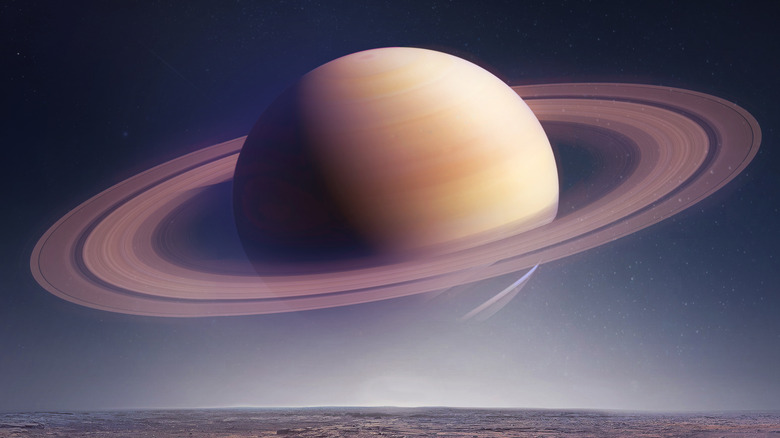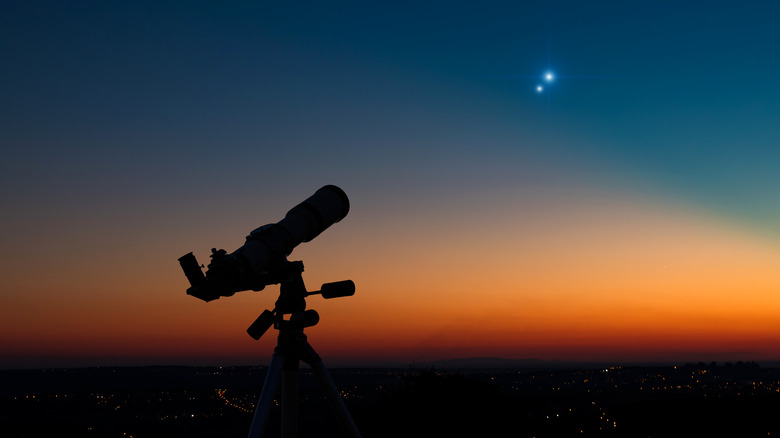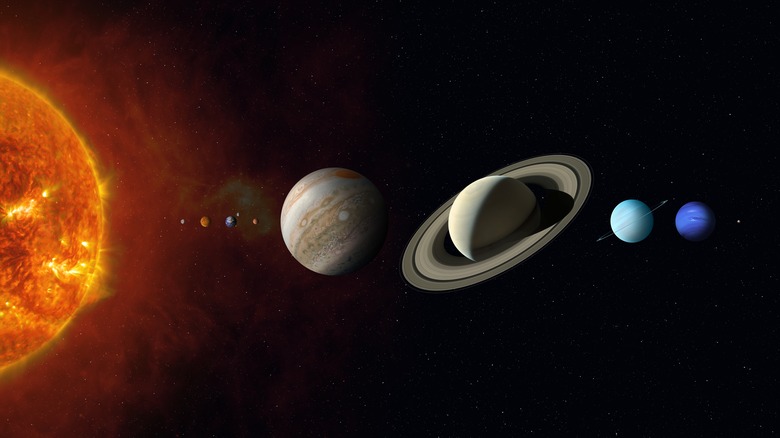Here's How Many Years It Would Take To Travel To Saturn
Over the years, science fiction has promised us so much like hoverboards, teleportation, and the ability to sense murders before they happen (a la Tom Cruise in "Minority Report"). Here in real life, though, the peak of human ingenuity was probably the creation of those sneakers with the wheels that pop out. Disappointing.
While astronomers have taken tremendous leaps and bounds in their knowledge of the mysteries of space, there's only so much we can do with this information. We're bound, after all, by the limitations of both our technology and the longevity of these delicate fleshy bodies of ours.
As it turns out, though, jaunts to the planets of the Milky Way may conceivably be possible in the near future. They might even take rather less time than you thought. How long would it take to travel to Saturn? It doesn't seem to be such a long-haul flight after all, by the immeasurably vast standards of space at least.
Unmanned probes' journeys to Saturn (and beyond)
Granted, Saturn isn't what you'd call an ideal vacation destination by any stretch. As NASA reports, it's a vast gaseous ball, consisting primarily of helium and hydrogen. This means that it's essentially impossible for it to play host to any sort of living being at all (that requires a solid surface). According to Space, one of the planet's moons, Titan, is about as friendly a location as humankind is likely to find this distance from Earth (boasting a weather system and environment that could be survived with just protection from the bitter chill and breathing apparatus), but Saturn itself is a no-go for us.
Even so, that's humanity for you. If there's information to be gathered or a feat to be performed, there will be someone brave, bold, foolhardy and inquisitive enough to do it. Scientists have already sent numerous crafts to Saturn, and the time their journeys took varied substantially. Per NASA, it took almost seven years for Cassini to reach Saturn.
The spacecraft left Cape Canaveral in October of 1997, arriving at its spectacular destination in mid-2004. It orbited the planet 294 times over a 13-year period before its power supply gave out in September 2017 and it was led on a controlled descent into the planet's atmosphere.
With some clever maneuvering, the trip my be quicker than expected
NASA's New Horizons spacecraft was launched in January 2006, per NASA. It reached its first major goal, Pluto, in July of 2015. Around four years later, it passed 2014 MU69, which was then the most distant space landmark humanity had sent a probe to.
According to Universe Today, New Horizons reached Saturn in just two years and four months. It was aided in this feat by some clever maneuvering along the way. Approaching Jupiter's gravity, per NASA, cut travel time by three years, allowing for a 9,000 mph (14,000 kph) increase in speed.
In April of 2002, a fan of NASA's StarChild initiative (aimed at young space enthusiasts) asked how long a voyage to Saturn would take. In answer, NASA stated that, as we've seen here, there's no particular time scale that can be given. Course corrections, paths taken and technology used are vital considerations, and the journey to Saturn took over three years for both Voyager craft. Considering that Voyager would reportedly take an estimated 75,000 years to reach Proxima Centauri, this doesn't seem so bad at all.


